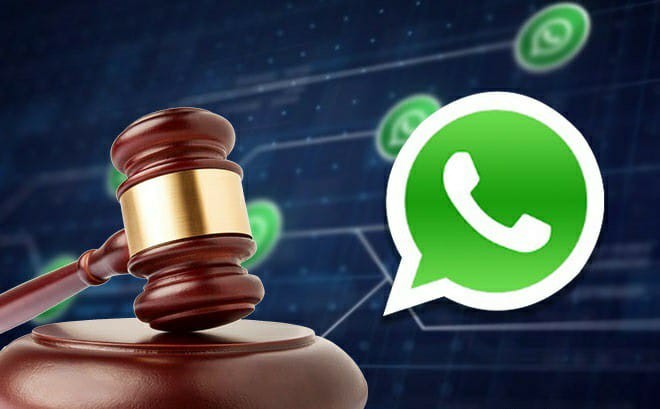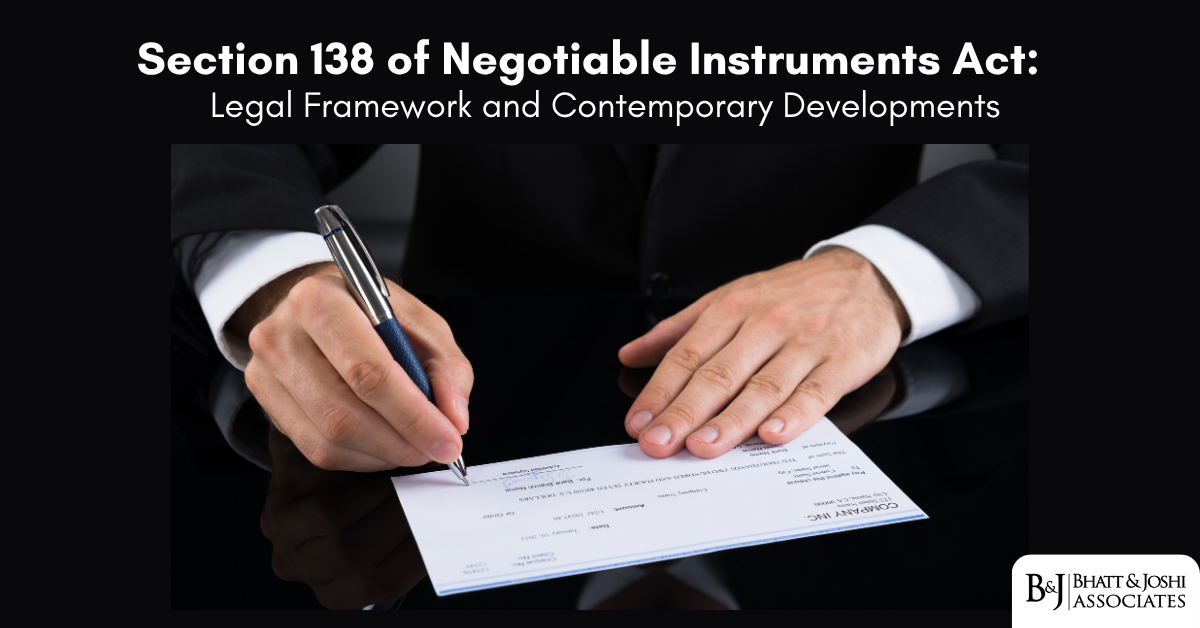Are WhatsApp messages admissible in court of law?
Introduction
The digital revolution has fundamentally transformed the landscape of communication and evidence presentation in Indian courts. With technological advancement permeating every aspect of human interaction, the traditional modes of documentation and evidence collection have evolved significantly. WhatsApp, as one of the most prevalent messaging platforms globally, has emerged as a critical source of evidence in legal proceedings across India. The admissibility of electronic evidence, particularly WhatsApp messages as evidence presents unique challenges that require careful examination under the Indian Evidence Act, 1872 and subsequent amendments introduced by the Information Technology Act, 2000.
The intersection of technology and law necessitates a nuanced understanding of how electronic records, including WhatsApp messages, can be presented and accepted as valid evidence in Indian courts. This analysis examines the regulatory framework governing the admissibility of WhatsApp messages, the conditions precedent for their acceptance, and the judicial precedents that have shaped current practice.

The Legal Framework for Electronic Evidence
Statutory Foundation
The admissibility of electronic evidence in India is primarily governed by the Indian Evidence Act, 1872, as amended by the Information Technology Act, 2000. The Information Technology Act introduced crucial provisions that specifically address electronic records and their evidentiary value. Section 65A and Section 65B of the Indian Evidence Act constitute the cornerstone of electronic evidence law in India [1].
Section 65A provides that the contents of electronic records may be proved in accordance with the provisions of Section 65B [1]. This section establishes the procedural framework for introducing electronic evidence and mandates compliance with specific conditions outlined in Section 65B. The legislative intent behind these provisions was to create a structured approach to handling electronic evidence while ensuring its authenticity and reliability.
Defining Electronic Records
Under the Information Technology Act, 2000, Section 2(1)(t) defines an electronic record as “data, record or data generated, image or sound stored, received or sent in electronic form or microfilm or computer-generated microfiche” [2]. This definition encompasses WhatsApp messages, which are inherently electronic communications stored and transmitted through digital platforms.
WhatsApp messages fall squarely within this definition as they constitute data generated, stored, and transmitted in electronic form. The messages include text, images, audio recordings, and video files that are processed and stored on servers before being delivered to recipients. This classification is fundamental to understanding how WhatsApp communications are treated under Indian evidence law.
Section 65B: The Complete Code for Electronic Evidence
Technical Requirements
Section 65B(1) of the Indian Evidence Act creates a legal fiction by deeming electronic records to be documents, provided specific conditions are satisfied [3]. The provision states that “any information contained in an electronic record which is printed on a paper, stored, recorded or copied in optical or magnetic media produced by a computer shall be deemed to be also a document” if the conditions mentioned in the section are satisfied.
The conditions specified in Section 65B(2) include four fundamental requirements that must be met for electronic evidence to be admissible. First, the computer from which the information is obtained must have been regularly used for storing or processing information for activities regularly carried on by a person having lawful control over the computer’s use [3]. Second, the information must have been regularly fed into the computer during the ordinary course of such activities. Third, throughout the material period, the computer must have been operating properly, or any malfunction must not have affected the electronic record’s accuracy. Fourth, the information contained in the electronic record must reproduce or derive from information fed into the computer during ordinary activities.
The Certificate Requirement
Section 65B(4) introduces a mandatory certification requirement that has been the subject of extensive judicial interpretation [4]. The provision mandates that a certificate identifying the electronic record, describing how it was produced, providing particulars of the device involved, and confirming compliance with the conditions in Section 65B(2) must accompany the electronic evidence. This certificate must be signed by a person occupying a responsible official position in relation to the operation of the relevant device or management of relevant activities.
The certificate requirement serves as a safeguard against tampering and ensures the authenticity of electronic evidence. Given the susceptibility of digital data to manipulation, this procedural protection is essential for maintaining the integrity of the judicial process.
Landmark Judicial Precedents
State (NCT of Delhi) v. Navjot Sandhu (2005)
The Supreme Court’s decision in State (NCT of Delhi) v. Navjot Sandhu marked an early attempt to address electronic evidence admissibility [5]. The case involved call detail records and other electronic evidence related to the Parliament attack case. Initially, the Court held that electronic records could be admitted as secondary evidence under Sections 63 and 65 of the Evidence Act, even without strict compliance with Section 65B requirements.
The Court observed that printouts of electronic records taken through mechanical processes and certified by responsible officials could be admitted as evidence. This decision created a more lenient approach to electronic evidence, suggesting that the general provisions of the Evidence Act could supplement the specific requirements of Section 65B. However, this interpretation was later overruled as it undermined the legislative intent behind the specialized provisions for electronic evidence.
Anvar P.V. v. P.K. Basheer (2014)
The Supreme Court’s judgment in Anvar P.V. v. P.K. Basheer represents a watershed moment in electronic evidence law [6]. This three-judge bench decision fundamentally altered the landscape of electronic evidence admissibility by establishing that Sections 65A and 65B constitute a complete code for electronic evidence, overriding general provisions of the Evidence Act.
The Court applied the principle of “generalia specialibus non derogant,” meaning that special law prevails over general law [6]. Consequently, the Court held that Sections 63 and 65 have no application to secondary evidence by way of electronic records, which are wholly governed by Sections 65A and 65B. The decision emphasized that electronic records by way of secondary evidence cannot be admitted unless the requirements under Section 65B are satisfied, including the mandatory certificate under Section 65B(4).
In this case, the appellant failed to produce the required certificates for CDs containing election campaign materials, rendering them inadmissible. The Court’s reasoning centered on the susceptibility of electronic evidence to tampering and the need for strict procedural safeguards to ensure authenticity. This decision effectively overruled the more permissive approach taken in Navjot Sandhu and established a stringent standard for electronic evidence admissibility.
Arjun Panditrao Khotkar v. Kailash Kushanrao Gorantyal (2020)
The Supreme Court’s decision in Arjun Panditrao Khotkar v. Kailash Kushanrao Gorantyal resolved conflicting interpretations regarding the certificate requirement under Section 65B(4) [7]. This three-judge bench reaffirmed the mandatory nature of the certification requirement established in Anvar P.V. v. P.K. Basheer and clarified several important aspects of electronic evidence law.
The Court emphasized that the certificate under Section 65B(4) is a condition precedent to the admissibility of electronic records as secondary evidence [7]. However, the decision also clarified that no certificate is required when the original electronic document itself is produced. This can occur when the owner of a device containing the original information appears in the witness box and establishes ownership and operation of the device.
The judgment addressed practical challenges in obtaining certificates by allowing parties to apply to the court for production of certificates by concerned persons or authorities when such certificates cannot be obtained directly. This provision acknowledges the practical difficulties faced by litigants while maintaining the integrity of the certification requirement.
WhatsApp Messages: Specific Considerations
Classification as Electronic Evidence
WhatsApp messages are unequivocally classified as electronic evidence under Indian law. These communications are generated, stored, transmitted, and received through electronic means, placing them squarely within the ambit of Sections 65A and 65B of the Indian Evidence Act. The messages exist as data on servers and user devices, making them electronic records as defined under the Information Technology Act, 2000.
The electronic nature of WhatsApp messages raises important questions about their admissibility, particularly regarding the distinction between primary and secondary evidence. When WhatsApp messages are produced directly from the original device where they were first stored, they may constitute primary evidence. However, when presented as printouts or copies, they typically represent secondary evidence requiring compliance with Section 65B certification requirements.
Conditions for Admissibility
For WhatsApp messages to be admissible as evidence in Indian courts, several conditions must be satisfied. The fundamental requirement is that the messages must meet the technical conditions specified in Section 65B(2) of the Indian Evidence Act. These conditions ensure that the electronic system producing the evidence was functioning properly and that the information was recorded in the ordinary course of activities.
Specifically, the WhatsApp servers and user devices must have been operating properly during the relevant period [8]. The messages must have been transmitted and received through normal platform operations, and the integrity of the transmission process must be established. Additionally, the party seeking to introduce WhatsApp messages as evidence must demonstrate that the messages were received by the intended recipient, typically evidenced by delivery and read receipts within the application.
The authenticity requirements for WhatsApp messages include establishing the sender’s identity and confirming that the messages were sent with the requisite intent. Courts have recognized that blue tick marks indicating message delivery and reading can serve as evidence of successful transmission and receipt [9]. However, this evidence alone is insufficient without proper certification under Section 65B(4).
Practical Challenges in Certification
The certification requirement for WhatsApp messages presents unique practical challenges. WhatsApp operates through Meta Platforms, Inc. (formerly Facebook Inc.), an international corporation with complex server infrastructures spanning multiple jurisdictions. Obtaining certificates from such entities for individual users or even for law enforcement agencies can be extremely difficult or practically impossible.
The Supreme Court in Arjun Panditrao Khotkar acknowledged these challenges and suggested that parties could apply to courts for assistance in obtaining necessary certificates [7]. This mechanism provides a practical solution while maintaining the integrity of the certification requirement. Courts may direct service providers or relevant authorities to produce certificates when parties demonstrate genuine inability to obtain them through direct approaches.
Primary vs. Secondary Evidence Distinction
The distinction between primary and secondary evidence becomes crucial in the context of WhatsApp messages. When WhatsApp messages are displayed directly on the original device where they were first received or sent, they may constitute primary evidence under Section 62 of the Indian Evidence Act. In such cases, the strict certification requirements of Section 65B(4) may not apply, as established in Arjun Panditrao Khotkar [7].
However, when WhatsApp messages are presented as screenshots, printouts, or copies stored on different devices, they constitute secondary evidence requiring full compliance with Section 65B provisions. This distinction has practical implications for evidence presentation strategies and the burden of proof in legal proceedings.
Regulatory Compliance and Authentication
Chain of Custody Requirements
The admissibility of WhatsApp messages requires establishing a clear chain of custody to prevent tampering and ensure authenticity. This involves documenting how the messages were accessed, extracted, preserved, and presented to the court. Law enforcement agencies and forensic experts must follow established protocols for digital evidence collection and preservation.
The Supreme Court in Arjun Panditrao Khotkar emphasized the need for appropriate rules regarding retention of data, segregation, chain of custody procedures, and record maintenance for electronic evidence [7]. These requirements extend to WhatsApp messages, necessitating careful documentation of evidence handling procedures from initial discovery through court presentation.
Forensic Examination Standards
WhatsApp messages often require forensic examination to establish their authenticity and integrity. Forensic experts may need to analyze metadata, examine device logs, and verify transmission records to confirm that messages have not been altered or fabricated. The examination must comply with recognized forensic standards and methodologies to ensure reliability.
Section 45A of the Indian Evidence Act provides for the admissibility of expert opinions regarding electronic evidence [10]. Forensic experts can testify about the authenticity, integrity, and reliability of WhatsApp messages based on technical analysis. However, such expert testimony cannot substitute for the mandatory certification requirements under Section 65B(4).
Contemporary Challenges and Future Considerations
Encryption and Privacy Concerns
WhatsApp employs end-to-end encryption, which presents unique challenges for evidence collection and authentication. While encryption protects user privacy, it can complicate law enforcement investigations and evidence production. The encrypted nature of WhatsApp communications means that service providers cannot access message content, potentially limiting their ability to provide comprehensive certificates under Section 65B(4).
The balance between privacy rights and evidence collection requirements continues to evolve through judicial interpretation and legislative development. Courts must navigate the tension between protecting individual privacy and ensuring effective law enforcement and judicial proceedings.
Cross-Border Jurisdiction Issues
WhatsApp’s international infrastructure creates jurisdictional complexities for evidence collection and certification. Indian courts may face challenges in compelling foreign corporations to provide certificates or testimony regarding their systems and operations. These challenges require international cooperation and may necessitate diplomatic or treaty-based solutions.
The extraterritorial application of Indian evidence law to international service providers remains an evolving area requiring careful consideration of sovereignty, comity, and practical enforcement mechanisms.
Best Practices for Legal Practitioners
Evidence Collection Strategies
Legal practitioners handling cases involving WhatsApp messages must develop systematic approaches to evidence collection and preservation. This includes immediate preservation of devices, proper documentation of evidence handling, and early engagement with forensic experts when necessary. Practitioners should also consider the distinction between primary and secondary evidence when developing presentation strategies.
The timing of evidence collection is critical, as WhatsApp messages may be deleted or devices may be damaged or replaced. Practitioners should advise clients to preserve relevant communications and avoid any actions that might compromise evidence integrity.
Compliance with Certification Requirements
Given the mandatory nature of certification requirements established in Anvar P.V. v. P.K. Basheer and reaffirmed in Arjun Panditrao Khotkar, practitioners must ensure full compliance with Section 65B(4) when presenting WhatsApp messages as secondary evidence [6][7]. This may require engaging with service providers, seeking court assistance for certificate production, or considering alternative evidence presentation strategies.
Practitioners should also maintain detailed records of attempts to obtain certificates and any obstacles encountered, as courts may consider these factors when evaluating compliance efforts and determining admissibility.
Conclusion
The admissibility of WhatsApp messages in Indian courts represents a complex intersection of technology and law requiring careful navigation of statutory requirements and judicial precedents. The current legal framework, established through the Indian Evidence Act, 1872 as amended by the Information Technology Act, 2000, provides a structured approach to electronic evidence while ensuring necessary safeguards against tampering and manipulation.
The Supreme Court’s decisions in Anvar P.V. v. P.K. Basheer and Arjun Panditrao Khotkar have established clear precedents regarding the mandatory nature of certification requirements for electronic evidence while acknowledging practical challenges in implementation. These decisions reflect the judiciary’s commitment to maintaining evidence integrity while adapting to technological advancement.
As digital communication continues to evolve and expand, the legal framework governing electronic evidence must also adapt to address emerging challenges while maintaining fundamental principles of authenticity, reliability, and due process. The admissibility of WhatsApp messages in Indian courts will continue to develop through judicial interpretation and potential legislative refinement, requiring ongoing attention from legal practitioners, courts, and policymakers.
The current state of law provides a workable framework for handling WhatsApp messages as evidence, but practical implementation requires careful attention to certification requirements, evidence preservation protocols, and evolving technological capabilities. Legal practitioners must remain informed about developments in this area and adapt their practices to ensure effective representation while maintaining compliance with applicable legal standards.
References
[1] Indian Evidence Act, 1872, Sections 65A and 65B. Available at: https://www.indiacode.nic.in/bitstream/123456789/15351/1/iea_1872.pdf
[2] Information Technology Act, 2000, Section 2(1)(t). Available at: https://www.indiacode.nic.in/bitstream/123456789/13116/1/it_act_2000_updated.pdf
[3] Section 65B, Indian Evidence Act, 1872. Available at: https://indiankanoon.org/doc/35556724/
[4] Arjun Panditrao Khotkar v. Kailash Kushanrao Gorantyal, Civil Appeal Nos. 20825-20826 of 2017, Supreme Court of India (2020). Available at: https://indiankanoon.org/doc/172105947/
[5] State (NCT of Delhi) v. Navjot Sandhu, (2005) 11 SCC 600, Supreme Court of India. Available at: https://indiankanoon.org/doc/1142973/
[6] Anvar P.V. v. P.K. Basheer, (2014) 10 SCC 473, Supreme Court of India. Available at: https://indiankanoon.org/doc/187283766/
[7] Arjun Panditrao Khotkar v. Kailash Kushanrao Gorantyal, (2020) 5 SCC 263, Supreme Court of India. Available at: https://lawbhoomi.com/arjun-panditrao-khotkar-v-kailash-kushanrao-gorantyal/
[8] Shamsudin Bin Mohd. Yosuf v. Suhaila Binti Sulaiman, High Court case (Malaysia), cited in Indian jurisprudence on WhatsApp admissibility.
[9] SBI Cards and Payment Services Pvt. Ltd. v. Rohit Jadhav, Indian court decision recognizing blue tick evidence.
[10] Indian Evidence Act, 1872, Section 45A – Opinion of Examiner of Electronic Evidence. Available at: https://indiankanoon.org/doc/1870995/
[11] Supreme Court on Electronic Evidence under Section 65B, Corporate Law Analysis. Available at: https://corporate.cyrilamarchandblogs.com/2020/07/section-65b-of-the-indian-evidence-act-1872-requirements-for-admissibility-of-electronic-evidence-revisited-by-the-supreme-court/
[12] Electronic Evidence under Indian Evidence Act Analysis. Available at: https://www.latestlaws.com/articles/electronic-evidence-under-indian-evidence-act-1872-by-roopali-lamba
Links Download Full Booklet
- https://bhattandjoshiassociates.s3.ap-south-1.amazonaws.com/judgements/iea_1872.pdf
- https://bhattandjoshiassociates.s3.ap-south-1.amazonaws.com/judgements/it_act_2000_updated (1).pdf
- https://bhattandjoshiassociates.s3.ap-south-1.amazonaws.com/judgements/Arjun_Panditrao_Khotkar_vs_Kailash_Kushanrao_Gorantyal_on_14_July_2020.PDF
- https://bhattandjoshiassociates.s3.ap-south-1.amazonaws.com/judgements/Anvar_P_V_vs_P_K_Basheer_Ors_on_18_September_2014.PDF
- https://bhattandjoshiassociates.s3.ap-south-1.amazonaws.com/judgements/Sbi_Cards_And_Payments_Services_Pvt_Ltd_vs_Rohidas_Jadhav_on_17_January_2019.PDF













